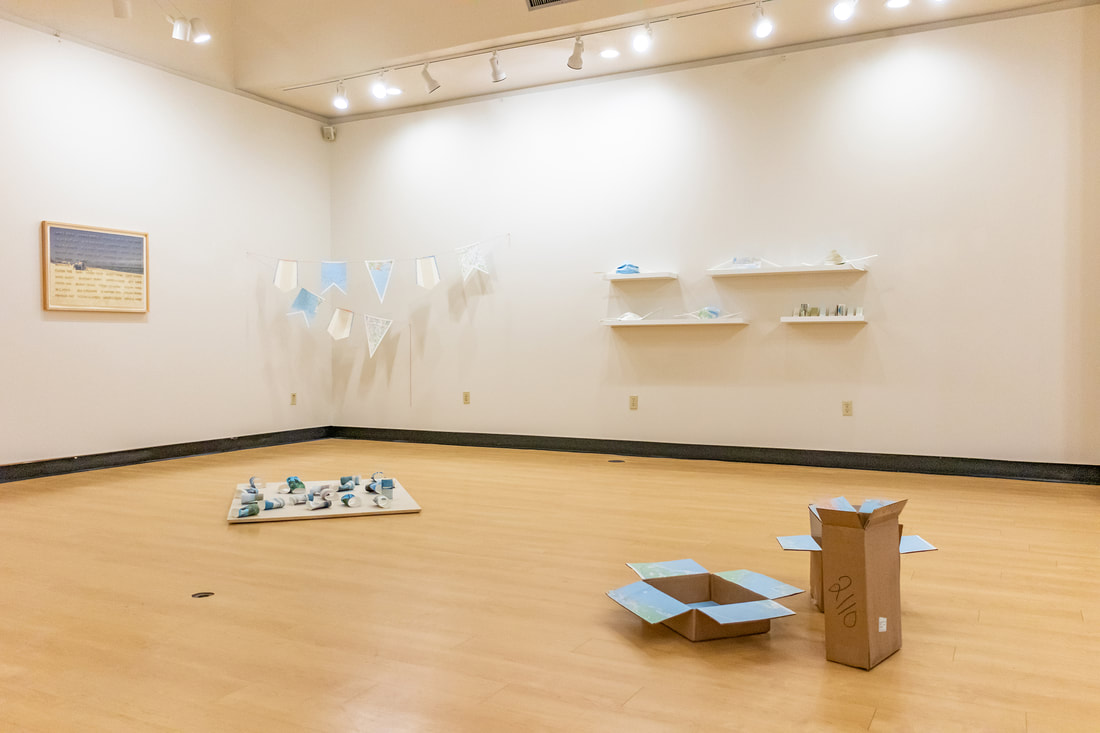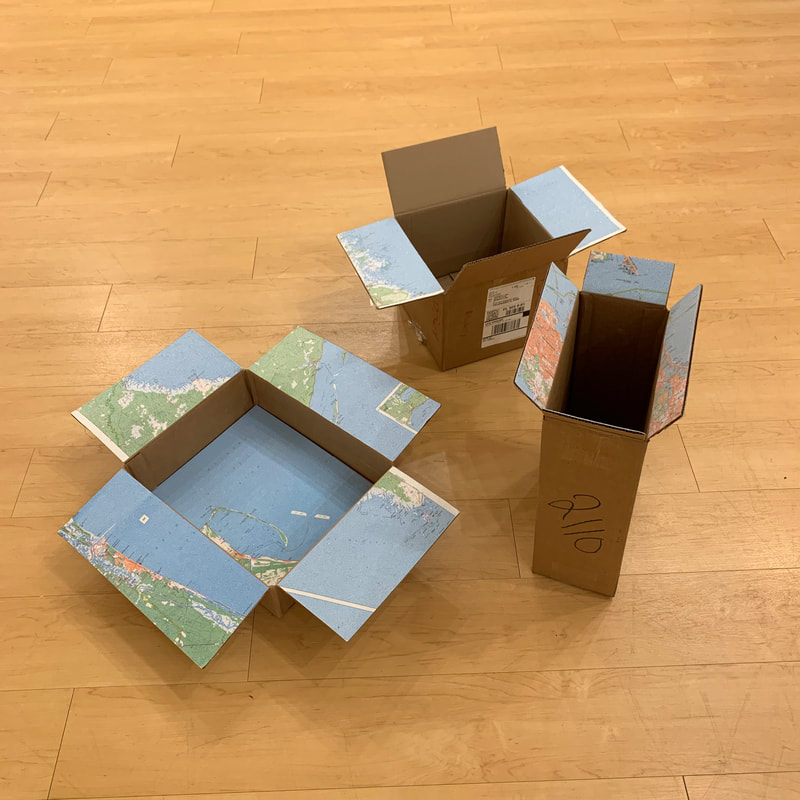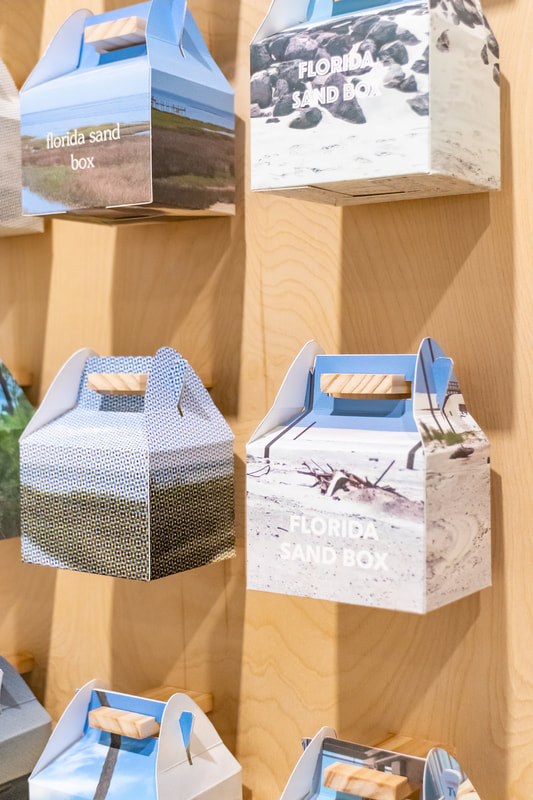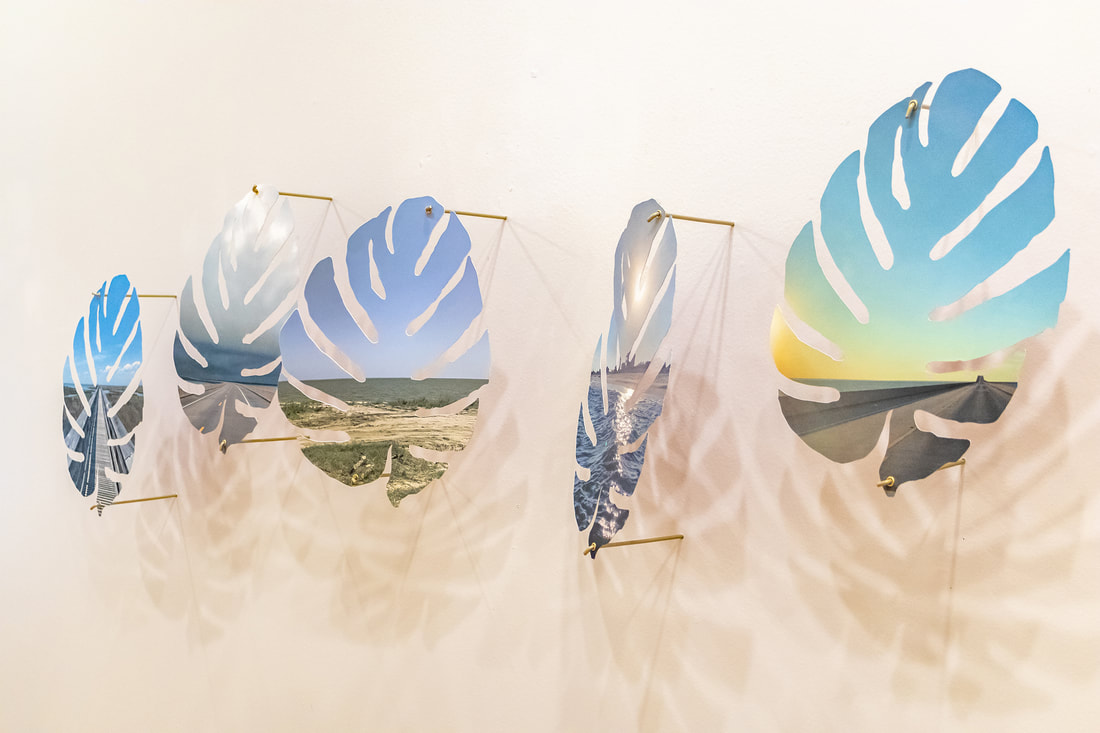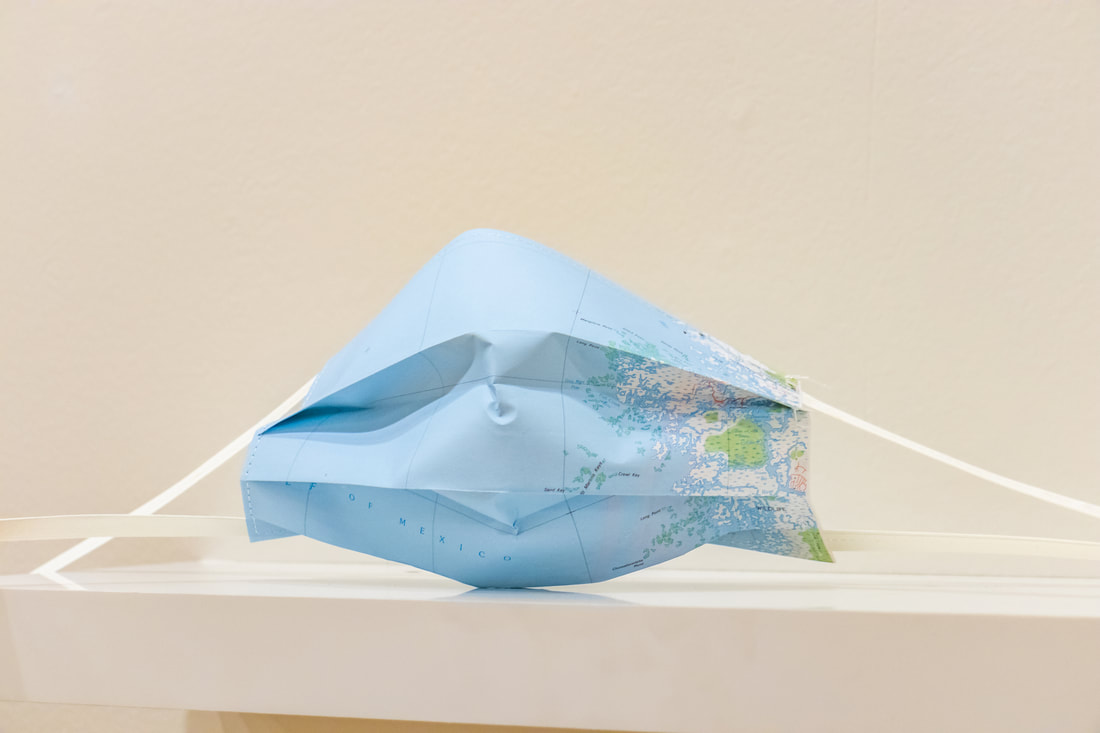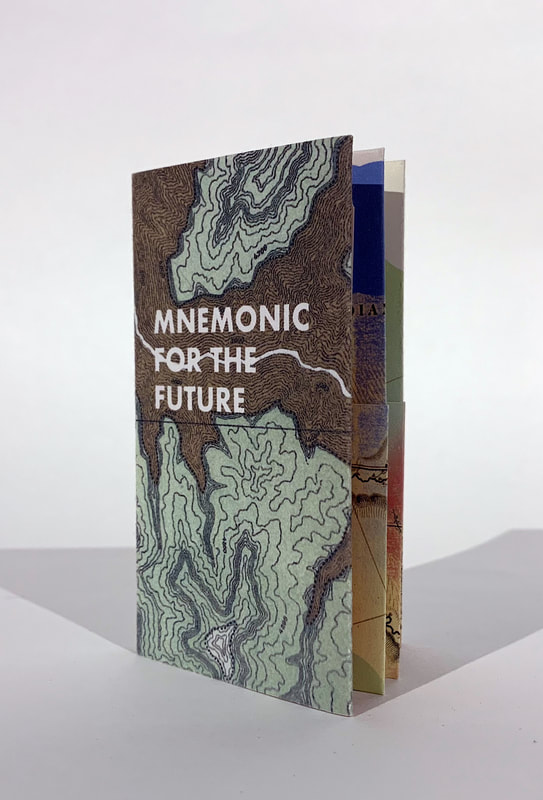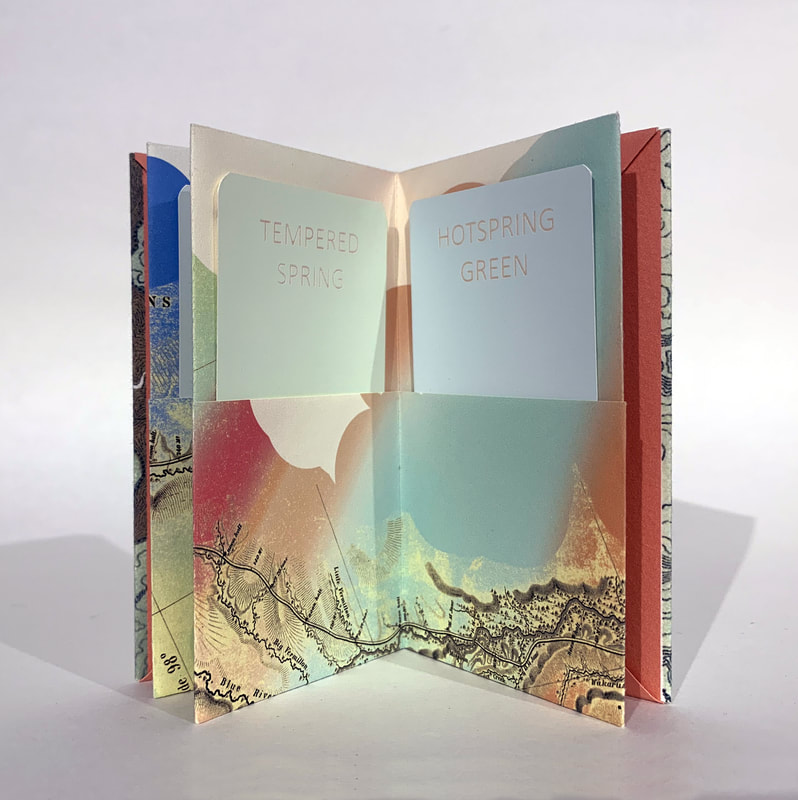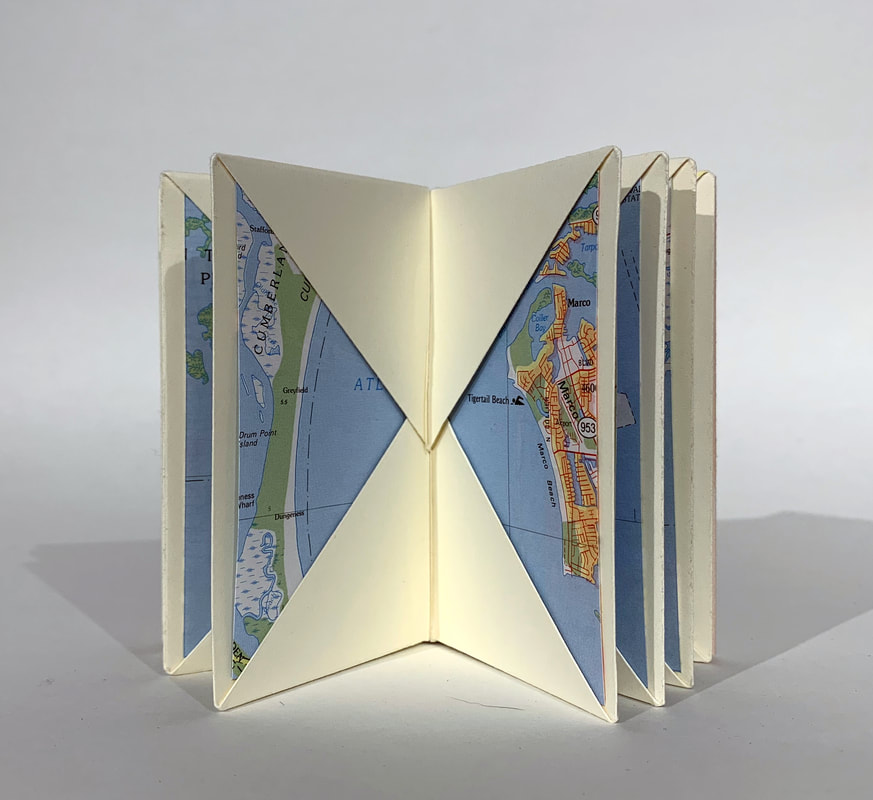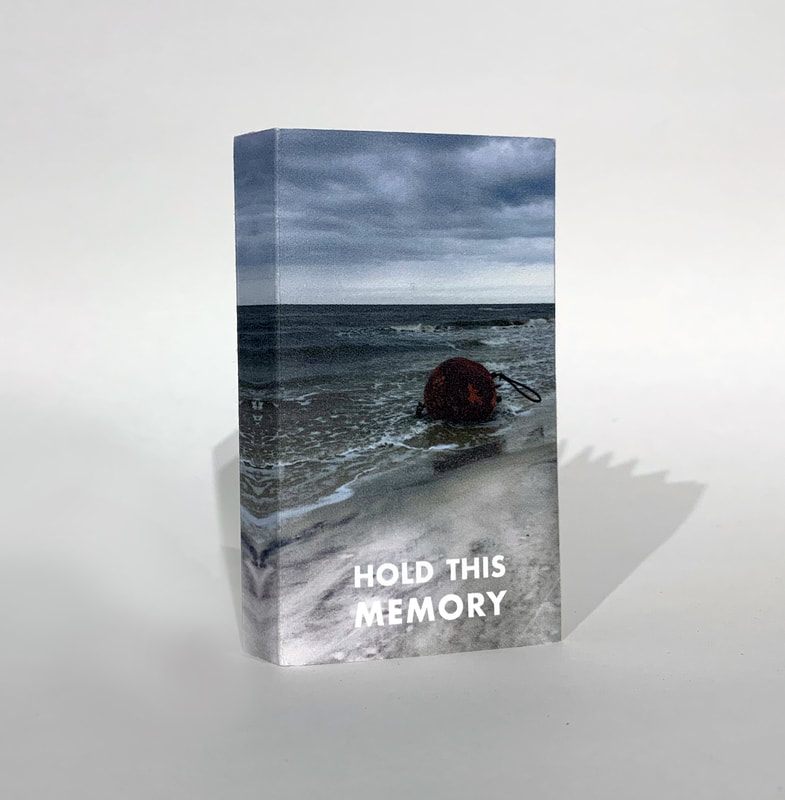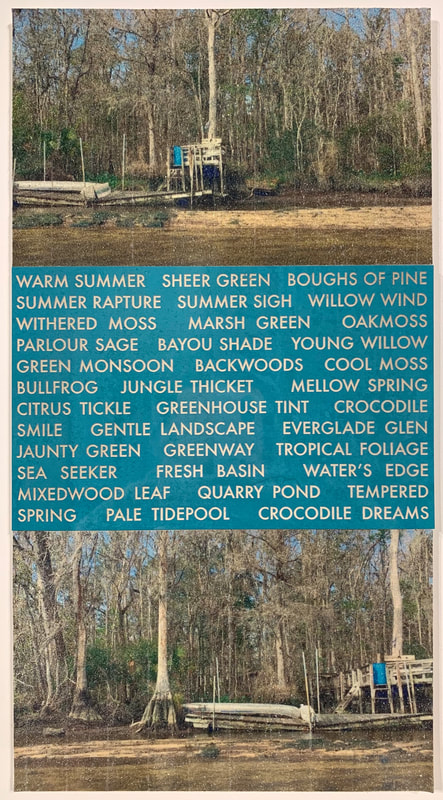In 2018 I started researching how rising sea levels will impact the Florida coastline. In 100 years, much of the peninsula will be gone, including all of the Everglades, most of South Florida, and significant portions of Tampa, St. Petersburg, and Jacksonville. I started to wonder how we will remember Florida when it is no longer here and felt nostalgia for Florida as it is right now.
In Welcome to Florida, I was inspired by the objects I imagined a welcome center on the Florida/Georgia border might have in the year 2121. In this future, sand will be special, as the beaches will have been eroded away, and so the visitor’s center might have commemorative boxes for tourists to collect sand in. Maps of the coastline in 2021 will be historical documents, proving that Florida did once jut out into the ocean. We might use paint swatches to replicate the colors of the beaches and swamps that will be gone.
As I progressed through this project, the global pandemic changed all facets of everyday life, and in the symbols of quarantine (masks, Amazon boxes), I started to see parallels to the climate crisis. The precarity of life in Florida became even more apparent, and in the state’s approach to covid-19, I saw a similarity to how we are thinking about climate change. With this project, I am contending with the radical changes we have already experienced and the ones that are to come and mourning for a particular version of our state that might not exist even now.
In Welcome to Florida, I was inspired by the objects I imagined a welcome center on the Florida/Georgia border might have in the year 2121. In this future, sand will be special, as the beaches will have been eroded away, and so the visitor’s center might have commemorative boxes for tourists to collect sand in. Maps of the coastline in 2021 will be historical documents, proving that Florida did once jut out into the ocean. We might use paint swatches to replicate the colors of the beaches and swamps that will be gone.
As I progressed through this project, the global pandemic changed all facets of everyday life, and in the symbols of quarantine (masks, Amazon boxes), I started to see parallels to the climate crisis. The precarity of life in Florida became even more apparent, and in the state’s approach to covid-19, I saw a similarity to how we are thinking about climate change. With this project, I am contending with the radical changes we have already experienced and the ones that are to come and mourning for a particular version of our state that might not exist even now.
Welcome to Florida installed in the Alexander Brest Gallery at Jacksonville University in February, 2021. The exhibition included many elements, including books, altered shipping boxes, masks made of maps, and sculptural paper objects.
MNEMONIC FOR THE FUTURE
What will we use to remember the outside once it's destroyed? This book features pockets that hold six paint samples with names that evoke the landscape: New Monsoon, Dew Drop, Ocean Buff, Tempered Spring, Hotspring Green, and Seashore Fog. In 100 years, we may use Valspar swatches to know what grass looked like.
|
In this book, fourteen maps of the 2014 Florida coastline are held in folded pockets. These are already just memories, of course, as the coastline is altered by rising seas and violent storms. The cover features an image of a 6' diameter buoy that Hurricane Michael washed onto the beach at Cape San Blas.
CROCODILE DREAMS
The Wakulla River is fed by a spring that puts out 300 million gallons of water per day. It's the largest of the 27 first-magnitude springs in the state of Florida, and one of the major exposure points for the Floridan Aquifer. Supplying drinking water to over 10 million people and irrigation to one of the most productive agricultural areas of the South, the Floridan Aquifer fuels Florida and Georgia.
Kayaking the Wakulla River is an incredible experience. The water is crystal clear, and the swampy greenery, Cyprus trees, and lazy alligators are photographic gold. Not all areas of the river are pristine, however, and the shore is dotted with built structures that, at the time these photos were taken, had weathered three major hurricanes in three years. What language can we use to describe this complex environment? The text is paint names for the colors found in the photo, providing a framework for categorizing, mediating, and owning nature. |
